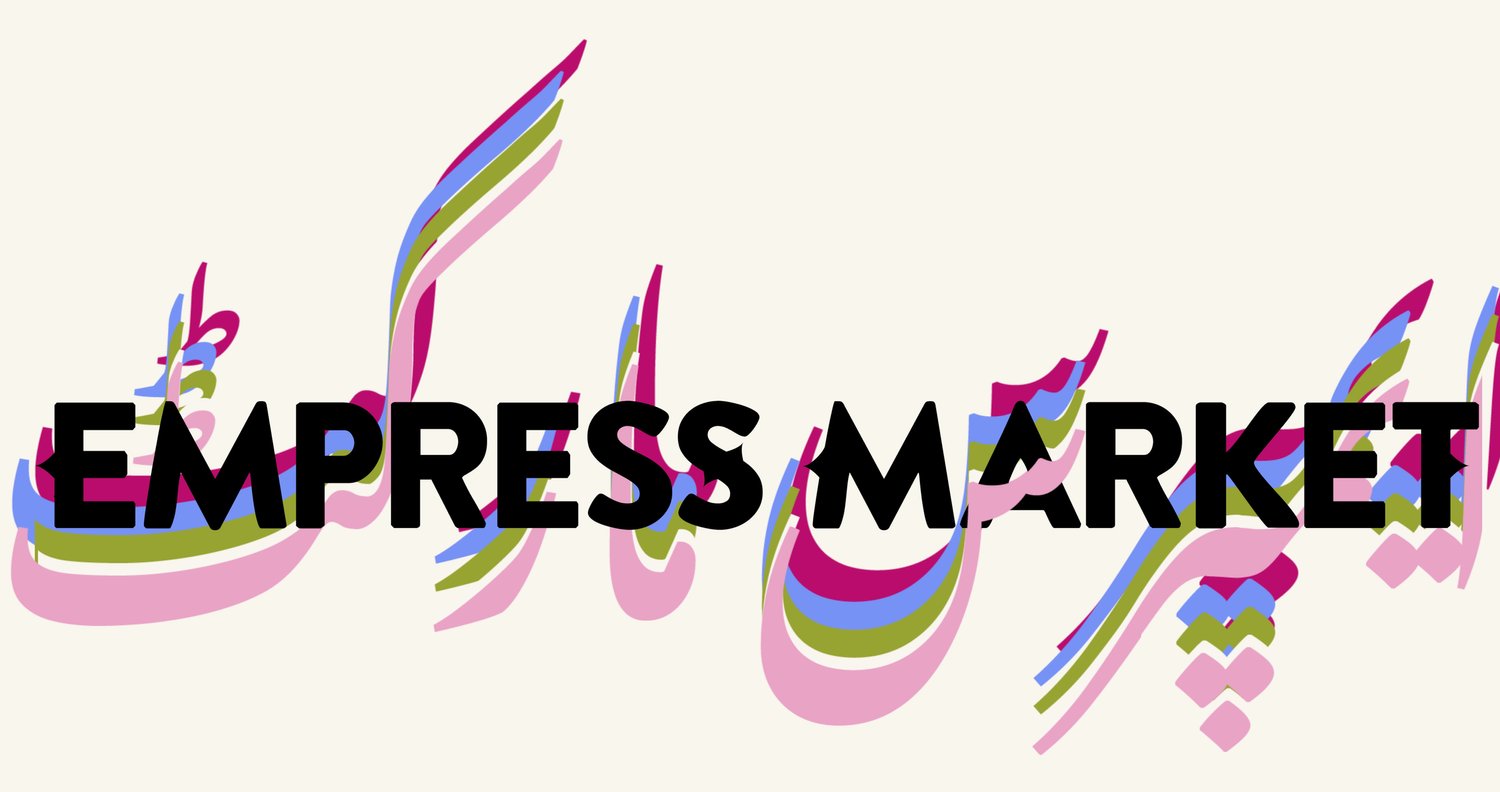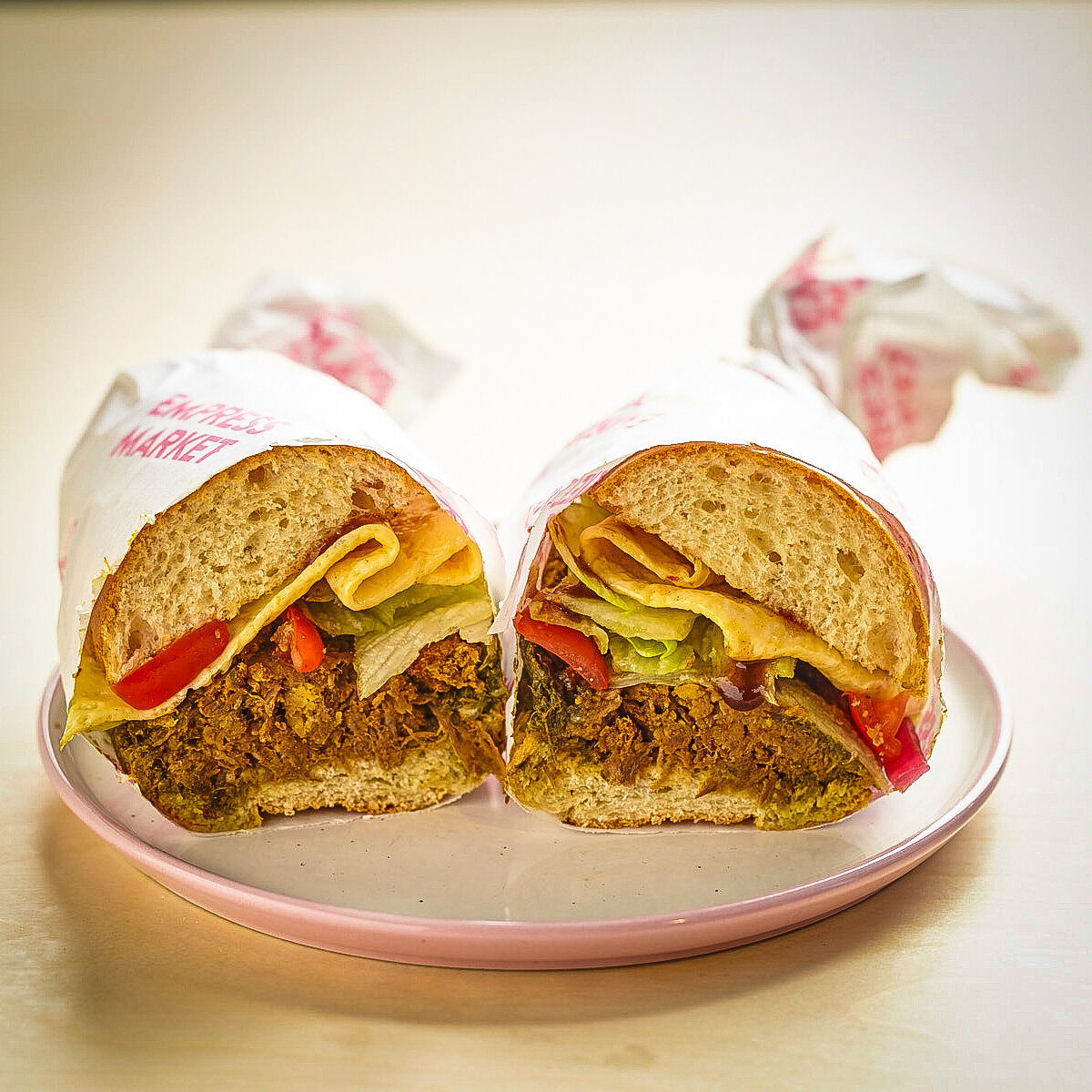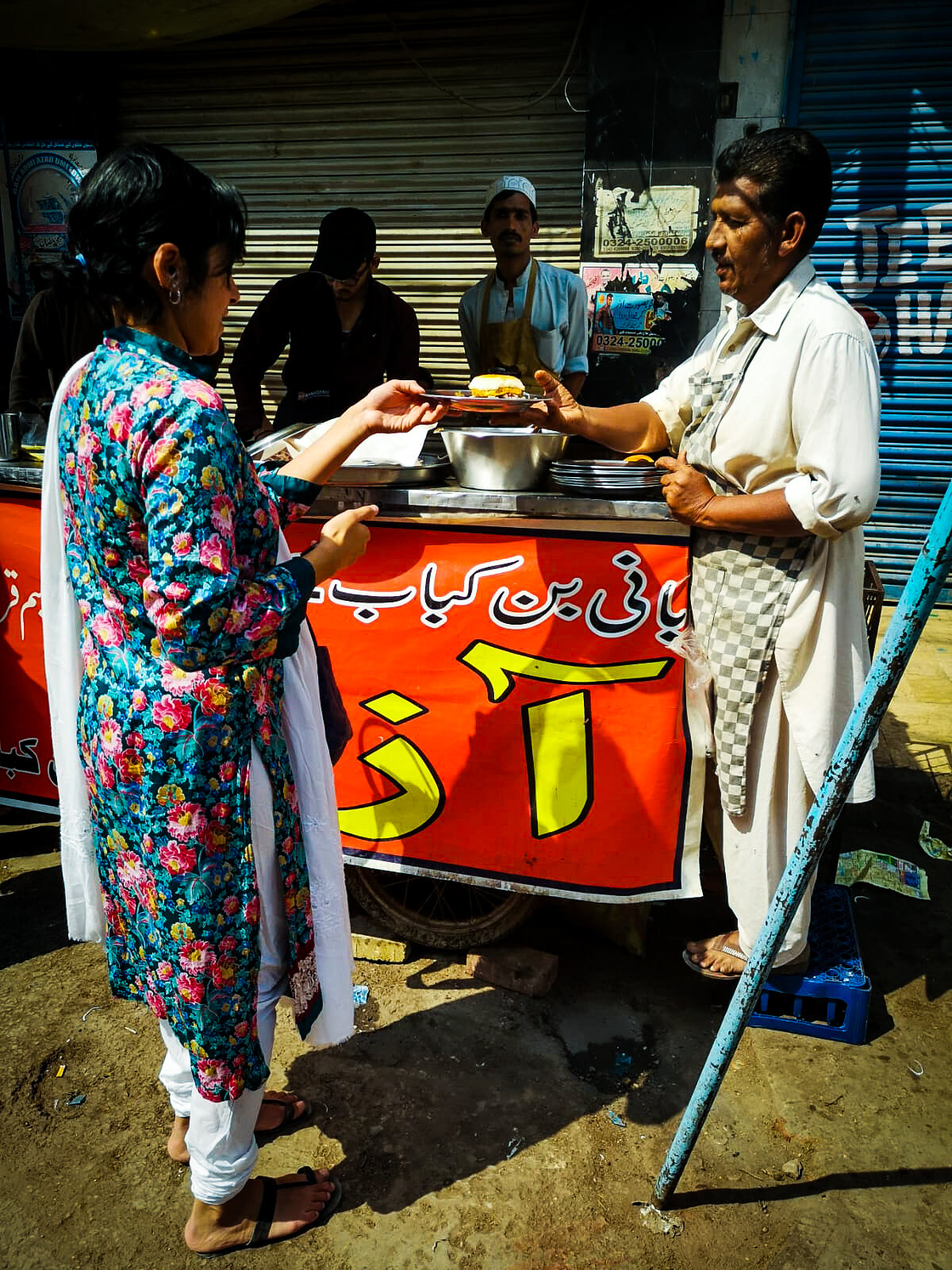What's a Bun Kabab, an Essay
It does what it says on the tin: it's a kabab in a bun!
I’m going to touch on some very basic food anthropology: A kabab (Urdu: کباب,) is any meat or vegetable cooked on an open flame. It is also spelt kebap, kebob, kabob & kebab across Western Asia, including Turkey, Persia, India and, of course, Pakistan.
I’ve been asked if people in Pakistan really eat brioche or even buns, too many times to count at my stall in London. Yes, they do. (I’m not really going to go into this as I refuse to entertain this ignorant question!) Hundreds of years of European colonialism and some think we Pakistanis haven’t experienced bread in all its glorious forms? The world is very small. Pakistani appetite for bread goes far beyond roti and naan. We eat gluten in all its forms and glory! (Also just remembered sliced bread is called double roti in Urdu! LOL where’d that come from?!)
Classically, a Bun Kabab is a pulled beef or daal patty in a whipped egg coating, seared off on a tawa. It is served with lashings of coriander chutney and heaps of pickled red onion in a toasted soft white bun.
Bun Kabab epitomises modern urban eating. True to the spirit of most global street food, Bun Kabab can be eaten in one hand, on the go. In Pakistan, the stalls are typically set up at midday to welcome the lunch time rush and are open till the wee hours of the night, lining the stomachs of after party munchers. Service is fast with little room for bespoke orders, you grab you go. The price ranges from Rs 30-200 (14p-94p) depending on what side of town you’re eating a Bun Kabab.
The history of Bun Kabab stalls can be traced back to the 1950’s, and some would say they were brought over by the Muhajir (migrants) who travelled to Karachi from Mumbai after the Partition of the Indian subcontinent (see Pav Bhaji!). The exact origins are difficult to determine, but what I can ascertain is the Bun Kabab’s embodiment of nostalgia. Talking about Bun Kababs with my dad sparks fond memories of his youth, bunking college and hanging out (by ‘hanging out’, I assume smoking!) with friends. It evokes the same feelings for so many; this humble street food has come to capture a sense of identity for Karachiites around the world.
There are countless Bun Kabab stalls scattered like stars across the streets of Karachi. At the edge of bustling fabric markets, Bun Kabab cafes feed peckish women after a long day of shopping. Mobile carts are stationed at office, college and school gates to satiate the lunch time hunger. Karachi’s famous food street, Burns Road, is dotted with numerous Bun Kabab stalls.
I have eaten each and every one of these types of Bun Kababs in my research (with greedy enthusiasm!). So despite what some Karachites will tell you, just as there isn't one way to be Pakistani, there isn't an authentic one way to serve a Bun Kabab.
This brings me to a vital point - what makes a Bun Kabab a Bun Kabab and not a burger. In fact this is quite a contentious issue for the Bun Kabab hardliners! They will accommodate the variations described above, but they’ll never fail to challenge the description of the Bun Kabab as the ‘anday wala burger’ (the burger with the egg).
Up until the 1980’s there were only a handful of Western-style burger joints in Pakistan. Living in Lahore during the ‘90s I remember my dad scouring the city to find Mr Burger or Salt’n’Pepper. I still remember taking the first bite of the Pakistani burger where I was met by a coriander seed and sliced fresh chilli. “Baba, this is not a burger”. It was a chapli kabab in a bun.
The world’s most famous burger arrived in Pakistan with its Golden Arches in 1998 (What a moment!). The arrival of fast-food chains was the watershed moment of American style burgers my gora pakora palette craved.
(See The Golden Arches Theory - when a country has reached economic development where it has a middle class strong enough to support a McDonald's network, it would become a "McDonald's country", and will not be interested in fighting wars anymore.
“In the rich, lazy, and happy 1990s, Americans imagined a world that could be just like them.” In essence, burgers were a symbol of American imperialist capitalism. Also see McDonalds Bun Kabab!)
So, are you a Burger or a Bun Kabab?
Allegedly, the famous Pakistani comedian Umar Sharif coined the term ‘burger’ to describe Pakistani urban elite. Since then, it is used as a dig to describe those with a heavy colonial hangover, a ‘burger’ (badly) parroting Western ideals. The title is earned from affected American or British accents, name dropping international holiday destinations and brands, and a general distancing from desi food and culture.
What the Bun Kabab vs Burger debate is really doing is highlighting Pakistan's imbalance of power and complicated class divide. Burgers represent class privilege and pandering to Western ideology. Bun kababs represent homegrown and humble patriotism.
Of course, this dichotomy is reductive and essentialises Pakistani identity as a one or the other. To be a ‘burger’, are you rejecting your desi roots?
And to be a ‘Bun Kabab’ are you a Pakistani through and through?
I think I’m a bit of a burger and a bun kabab. Why not have both? The burger and bun kabab in me is not keen on this binary and knows that my Pakistani identity has space for a myriad different hot and spicy fillings between my buns.
Like it or not, a Bun Kabab resembles a burger; two pieces of bread sandwich a meat filling. The bun can’t help but reference the famous Western fast food. And why not, put a yummy filling between two pieces of bread - what's not to love! But remember, it is the filling where the real magic happens. Humble ingredients brought to life with age-old culinary traditions and hearty spices. The Bun Kabab is bursting with flavour, worlds colliding in every bite.
The Bun Kabab draws the best from all the worlds it is exposed to, melding them to form something special. It is the very nature of the third culture kid.
I believe Bun Kabab vendors in Pakistan would share this position, seeing as they use ‘burger’ and ‘bun kabab’ interchangeably in their stall signage.
The Bun Kabab is not just one ‘authentic’ thing, but a food in a constant state of flux. It celebrates the multiculturalism of Karachi, the city it calls home. As the biggest economic centre of Pakistan, migrants have always been pulled towards the port city. It is no surprise Karachi has become a melting pot of cultures,.
I would go as far as say Bun Kabab is a class leveller, uniting Karachiites.People from every strata of society enjoy this street food. Young an old, poor and rich, they all have their favourite Bun Kabab vendor.











